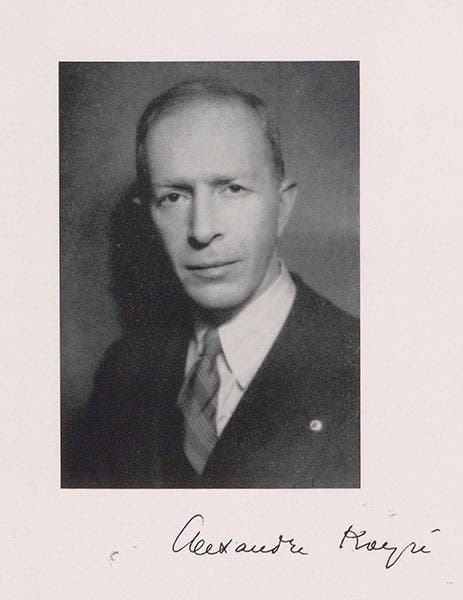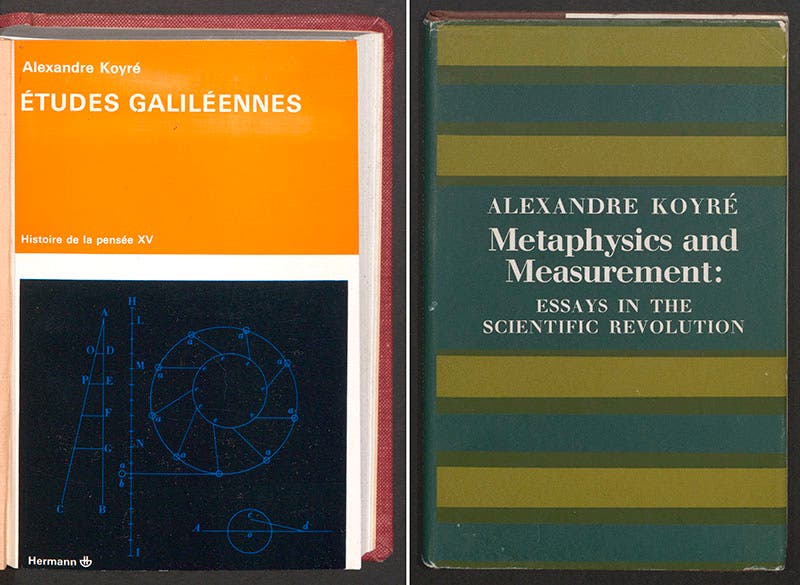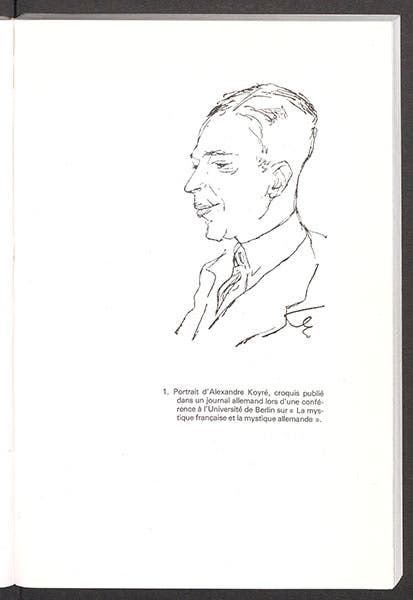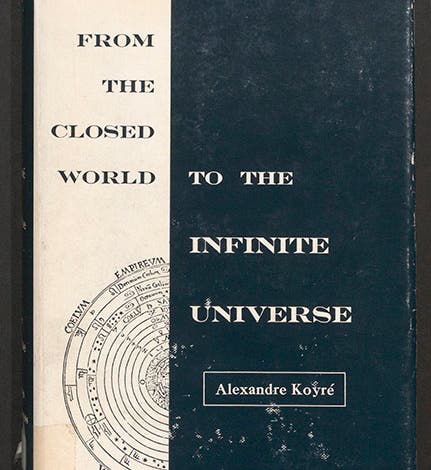Scientist of the Day - Alexandre Koyré
Alexandre Koyré, a French philosopher of science, was born Aug. 29, 1892. Koyré focused on the scientific revolution of Copernicus, Kepler, and Galileo, and he argued strongly that the scientific revolution was an intellectual revolution – a new way of looking at the universe – and not simply the result of observation, experiment, or discovery. Against those who argued that Galileo's idea of inertia was just an outgrowth of the medieval impetus theory, since they both explain how an object keeps moving when a force is removed, Koyré maintained that Galileo's view reflected a profound conceptual shift, with inertia being now an innate tendency to persist in a given state, while impetus had to be put into a body from outside, and was in a sense foreign to the natural state of things.

Alexander Koyré, photograph, in From the Closed World to the Infinite Universe, 1957 (author’s collection)
Koyré also saw Galileo as a Platonist, believing that the laws of nature should describe the behavior of ideal bodies in ideal states, not actual bodies behaving in real-life circumstances. Koyré even maintained that Galileo never utilized – or in some cases even performed – his famous experiments as methods of discovery; rather, he used experiments to confirm results that he had worked out in his mind.

Front cover of Alexandre Koyré, Études galiléennes, 1966 (left; Linda Hall Library) and dust jacket of Metaphysics and Measurement, 1968 (right, author’s collection)
We now know that Koyré was wrong about Galileo’s use of experiments, since we have discovered much more evidence that Galileo actually did most of the experiments he described. But Koyré’s other argument, that there was a conceptual revolution in Galileo’s time as to how the universe works that set it apart from medieval natural philosophy, still has power for some of us. Moreover, Koyré's portrait of Kepler – the mathematical mystic in search of harmonies in the universe but refusing to go beyond the empirical evidence – is still one of the finest we have. Koyré's From the Closed World to the Infinite Universe (1957; first image) continues to be a welcome introduction to intellectual history at its finest, steeped in the sources yet beautifully written and easily accessible to any reader. We have most of Koyré’s works in the general collection of the Library (and in my own collection), and we show here a few covers and dust jackets from some of them. The pencil sketch was included in a collection of Koyre’s papers and presentations published in 1986; the source is not given, but it is quite charming (fifth image).

Pencil sketch of Koyré, unknown artist and date, from Koyré, De la mystique à la science, 1986 (author’s collection)
Dr. William B. Ashworth, Jr., Consultant for the History of Science, Linda Hall Library and Associate Professor, Department of History, University of Missouri-Kansas City. Comments or corrections are welcome; please direct to ashworthw@umkc.edu.




![Using an astrolabe to measure the depth of a well, woodcut in Elucidatio fabricae vsusq[ue] astrolabii, by Johannes Stöffler, 1513 (Linda Hall Library)](https://preview-assets-us-01.kc-usercontent.com:443/9dd25524-761a-000d-d79f-86a5086d4774/a998eb50-55d2-4a88-ace2-a50aa5fa86e7/Stoffler%201.jpg?w=210&h=210&auto=format&fit=crop)

